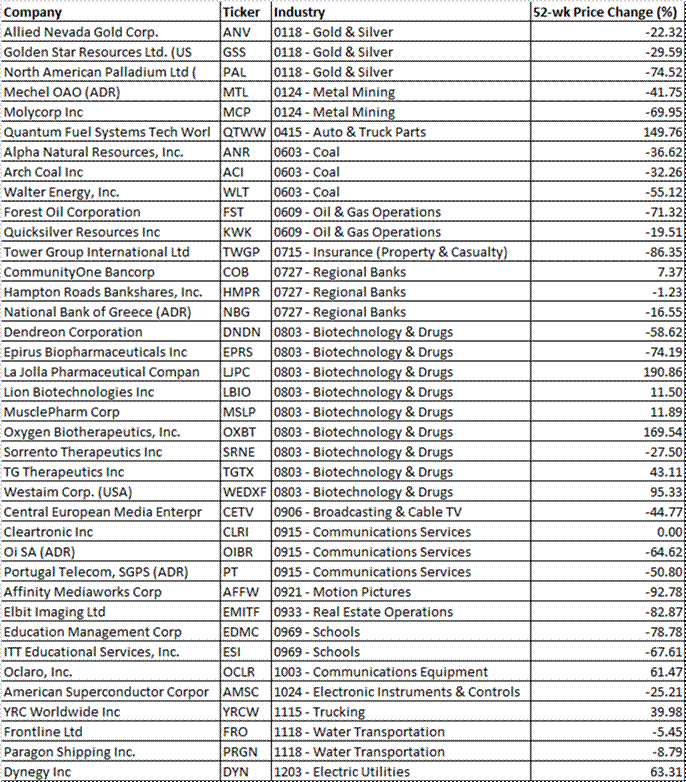Pick a Portfolio!
Post on: 4 Июль, 2015 No Comment

By Motley Fool Staff | More Articles
8.74%
*Compound annual total return.Source: Roger C. Gibson, Gibson Capital Management. Large caps from S&P 500; REITs from NAREIT Index; international from Europe, Australasia, and Far East Index; commodities from Goldman Sachs Commodity Index.
Let’s start with the number we understandably care the most about: compound annual return. We see that Portfolio E is the winner, with C not far behind. Down on the next line, we see how earning a percentage point or two more a year can make a humongous difference when compounded over decades. The winner here (E) turned $1 into $87.31, almost double the $45.50 created by the lowest-returning portfolio (A), even though their returns — 13.22% vs. 11.19% — don’t seem all that far apart.
Now let’s take a look at the other side of the coin: volatility, as measured by standard deviation. The higher the number, the more likely the portfolio was to vary widely above or below its average return. Here, the winner is E: Its standard deviation of 11.00 is well below that of the other portfolios. And look at its Sharpe Ratio! That’s a metric developed by Nobel Prize-winning economist William Sharpe, who developed the ratio as a way to measure risk-adjusted returns. The higher the number, the more bang you’re getting for the amount of risk your buck is taking. But you don’t need that fancy-pants number to figure that out. All you have to look at is the worst one-, three-, five-, and 10-year returns. Portfolio E had a darn good compound annual return over those three-plus decades, yet its bad years weren’t quite so bad, relative to the other portfolios.
So which portfolio would you choose? Go ahead, make your choice.
Got one? Great. Now, let’s pull back the curtain to reveal which investments are behind.
- Portfolio A: U.S. stocks, as measured by the Standard & Poor’s 500.
- Portfolio B: Non-U.S. stocks, as measured by the Europe, Australia, and Far East Index (EAFE).
- Portfolio C: Real estate, as measured by the National Association of Real Estate Investment Trusts (NAREIT) Equity Index.
- Portfolio D: Commodities, as measured by the S&P Goldman Sachs Commodities Index (GSCI).
- Portfolio E: A portfolio of equal parts of portfolios A, B, C, and D, rebalanced annually.
Now that you know what’s really in each portfolio, glance back at the chart. Surprised? Portfolio E — the most diversified portfolio — was the best-performing portfolio, and had a much smoother ride. It’s truly a case of the whole being greater than the sum of its parts.
This research comes to us from investment advisor Roger Gibson, author of Asset Allocation: Balancing Financial Risk. one of the best books you’ll ever read about constructing a smartly diversified portfolio.
How did they do that?
How can a portfolio have a greater return than the sum of its parts and have lower volatility than each of its parts? The answer isn’t just diversification, but diversification using assets that tend to go in their own directions. Each of those asset classes tend to move to the beats of their own drums, at least to some degree.
In the academic world, this is measured by correlation — how much two investments tend to move in or out of sync. And when you combine assets that don’t perform similarly at the same time, the standard deviation of the entire portfolio declines. Throw in regular rebalancing and you not only get less volatility, you also increase your chances for an enhanced return because you’re selling the investments that have done well to buy the investments that have lagged. Since assets take turns sprinting ahead and then taking a breather, rebalancing ideally leads to selling high and buying low.
Despite the impressive numbers put up by Portfolio E, it isn’t necessarily a portfolio you’d own. Gibson himself doesn’t recommend such a mix to his clients. First of all, most investors should add bonds to the mix. Plus, the exact mix is tailored to each investor’s goals and risk tolerance (just as yours should be). But as an instructional tool that demonstrates the power of asset allocation, Gibson’s illustration is hard to beat.
For some model portfolios that could serve as the foundation for your own investment mix, let’s move on to the last article in our series .














